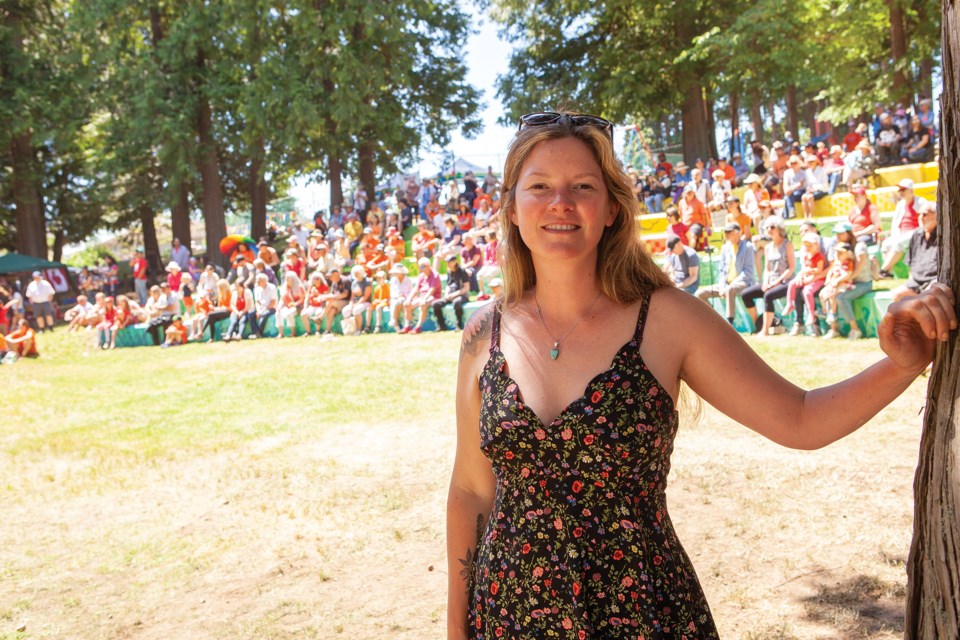A mural taking shape in the outdoor amphitheatre of Sechelt’s Hackett Park is the product of all-ages community collaboration — and contributions by guardians of she shashishalhem, the traditional language of the shíshálh Nation.
The District of Sechelt engaged artist Emily Gray to create a mural for the smooth-faced concrete blocks that ring the park’s stage, terraced seating for audiences at the open-air performance venue.
Gray grew up on her family’s oyster farm on the Sunshine Coast. She produced her first mural in 2004 under the mentorship of Madeira Park-based artist Ken Walters. In the nearly two decades since, Gray has completed murals on the Coast, in the Lower Mainland, in Central America and Hawaii — all while juggling work as a scenic artist in the film industry and completing fine art studies at Emily Carr University.
She returned to the Sunshine Coast as a resident and teacher on call for School District 46. Through the process of educating young artists, the design and colours of the Hackett Park mural came into focus.
“The teaching element really helped me,” Gray said. “Working as a teacher, I was able to bring [the mural project] into the different classrooms I was in throughout the district, so I kind of walked around at the beginning to get students involved. I said: let’s play around with all these colour chips and rearrange them and see how the colors relate. And it was very accessible—people naturally have a lot of reaction to colour combinations. It was a really nice way to enter into the project.”
From the start, Gray was inspired to incorporate phrases from the she shashishalhem language. She contacted Rita Poulsen, a shíshálh language educator. Poulsen and fellow language advocate Andy Johnson led a language workshop during Sechelt’s syíyaya Days festival. The workshop offered members of the public a preview of the words and expressions that will ultimately be stencilled onto Gray’s mural.
Terms like ?imash ?imash (welcome), xelhkw’-at-tsut (respect), and syewen (power) were shortlisted for inclusion. The finished mural will include QR codes that can be scanned to play an audio pronunciation of each word.
“We’re giving space for the language to exist,” said Gray.
Each block in Gray’s design bears a distinct pattern, with colour tones varying according to its position. The symbols depict the evolution of life: from primordial ocean waves emerges the double helix of DNA strands, which stretch into tree roots and the pulse of a beating heart.
Although Gray designed the work, the bulk of painting was conducted by over 100 “pattern weavers” who responded to callouts on social networking sites. The volunteers included youth, senior citizens, professional artists, and people with disabilities.
“I was so impressed by the variety of people in our community and their ability to take a little time out of their life to do a project like this,” said Gray. “It was really special because in creating the work together, there’s also what I call a relational aesthetic. People are having conversations and sharing stories and becoming new friends. Beforehand, neighbours maybe saw each other walking their dogs. Now they know each other.”
Completion of the Hackett Park mural is anticipated by mid-summer. A short video documentary about the project is available on Gray’s website at emilygray.ca.

 with black bands.jpg;w=120;h=80;mode=crop)

